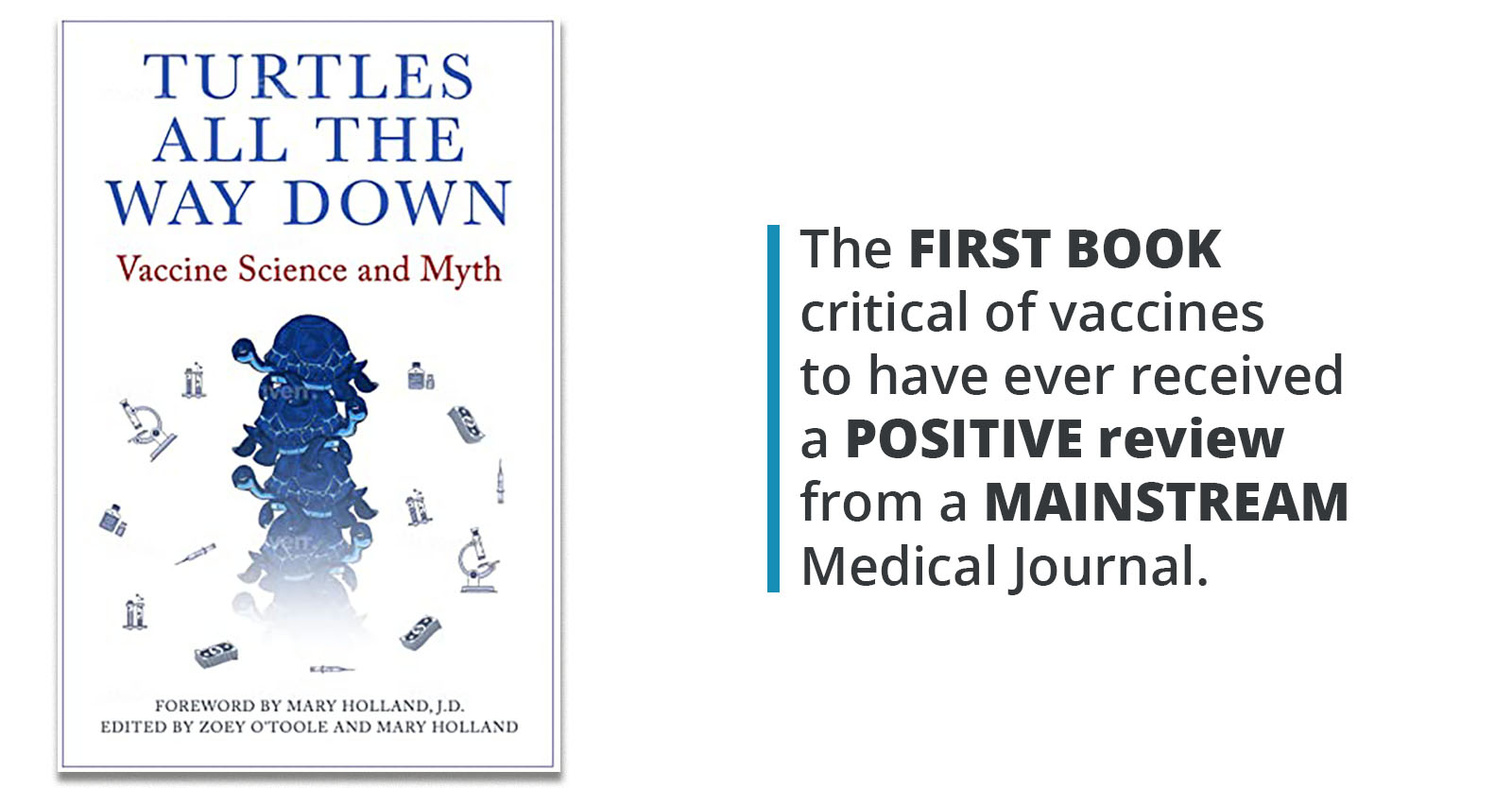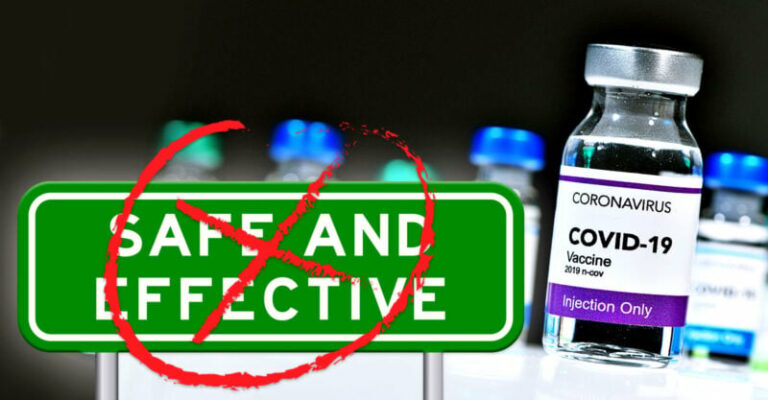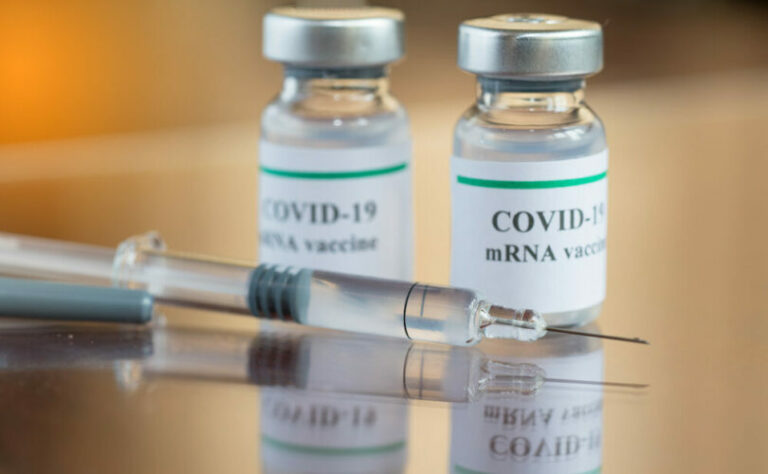Must-Read Book Asks: Why, After 7 Decades, Don’t We Have Proof Vaccines Provide More Benefit Than Risk?
Whether you are a healthcare professional, a parent of a young child or someone who wishes to productively engage in the vaccine debate sweeping the world today, this book is a must-read.
In 2019, a remarkable book, “Turtles All The Way Down: Vaccine Science and Myth,” was published in Israel. The book, originally written in Hebrew, is a comprehensive examination of the evidence behind the assertion that vaccines are safe and effective.
Though it might easily have been lost to obscurity, the book gained initial acclaim when the leading medical journal in Israel, Harefuah (“Medicine”), gave it a positive review.
Writing in the September 2019 issue of Harefuah, two senior academic criminologists, Nati Ronel and Eti Elisha, “found the book to be well-written, serious, scientific and important” offering “a comprehensive view of the issue.”
“Turtles All The Way Down: Vaccine Science and Myth” became the first book critical of vaccines to have ever received a positive review from a mainstream medical journal.
Criticism of Ronel and Elisha came quickly from the medical establishment, but as Mary Holland, editor of the book and Children’s Health Defense president and general counsel states in the book’s foreword:
“Their appraisal of the book still stands today, unscathed: in the three years since its (Hebrew) publication, no medical or medical science professional has succeeded in refuting the book’s claims.”
The reason the information offered in the book has yet to be refuted is simple. The book’s 1,200+ citations reference only mainstream scientific journals and health agencies like the Centers for Disease Control and Prevention (CDC), the U.S. Food and Drug Administration (FDA) and the World Health Organization.
An attack on the book is ultimately an attack on the medical establishment itself.
The book was recently published in English and has been available since July 2022.
If you wish to productively engage in the vaccine debate that is sweeping the world today, this book is a must-read.
Read the Full Article on The Defender here.
[…/…]
In order to answer the simple question of whether the “safe and effective” vaccine narrative is scientific or merely a myth we have to start with the basics and see what rabbit holes appear and then see where they lead.
The book does just that:
- Chapter 1 describes how vaccine clinical trials are conducted and the limits of what can be gleaned by these kinds of investigations. How much can we know about the safety of the products we inject into our children if no vaccine on the CDC’s childhood schedule was ever tested against a true placebo?
- Chapter 2 offers another sobering reality. There has been minimal scientific investigation into the mechanism by which vaccines could harm our physiology. Without any understanding of how they might cause adverse effects, how can we possibly know they don’t?
- Chapter 3 delivers unapologetic criticism of the adverse event reporting systems that purportedly serve to capture safety signals after modestly powered clinical trials are conducted and the vaccine is administered to tens of millions or more. They don’t work, but have they been designed that way purposefully?
- Chapters 4 and 5 demonstrate how epidemiological studies can easily be manipulated to produce a desired outcome. The authors take the discussion beyond the hypothetical and dissect several studies widely cited by vaccine proponents to reveal the bias that permeates their methodology and conclusions.
- Chapter 6 attacks our health agencies’ claims that the childhood vaccination schedule has been thoroughly tested. Is this claim founded in fact, i.e., randomized controlled trials? No, it is not. How about through large, long-term observational studies between vaccinated and unvaccinated children? No again. Certainly such studies would quiet vaccine skeptics. Why haven’t they been done?
- Chapter 7 demonstrates the glaring lack of evidence behind commonly held ideas that the timing and quantity of vaccines are not only optimal but safe.
- Chapter 8 delivers a stiff blow to the vaccine dogma by pointing out the elephant in the room: Mortality from diseases that are targeted by the childhood vaccine program had already significantly declined from their peaks prior to the widespread use of these vaccinations. And the elephant’s shadow: Why has the incidence of chronic disease exploded since the childhood vaccine program was expanded?
- In Chapter 9 the authors teach us about herd immunity, the carrot dangled in front of the public to urge us to participate in vaccination campaigns for the greater good. However, only a minority of the vaccines deployed upon our children are good enough to ever deliver herd immunity, no matter how many of them get into line. Yes, that is correct. Herd immunity is first a function of a given vaccine’s ability to prevent infection and transmission. If a vaccine cannot provide this, herd immunity cannot be attained. Period.
An honest examination of the book to this point should open most discerning readers to the possibility that the vaccine narrative may in fact be anchored more in myth than in science.
How can we know that childhood vaccines are safe if none have been tested against a true placebo?
How do we know that the “scare tactics” used by “anti-vaxxers” aren’t accurate stories of previously healthy lives that were devastated by vaccines? How do we know that adverse events are exceedingly rare if the CDC admits that our reporting systems capture only a fraction of them?
Why are so many children suffering from chronic illness today? Where were the inhalers, EpiPens and nut-free tables in public schools 50 years ago?
Why won’t our public health agencies, which are highly funded by taxpayer money and multinational for-profit pharmaceutical companies, conduct proper studies of the appropriate scale to compare the overall health of vaccinated to unvaccinated children to put this whole issue to rest once and for all?
The biggest turtle
We finally arrive at the biggest topic of all in Chapter 10. It’s the hard stop for many vaccine proponents, especially physicians, who may be open to a spirited debate from time to time.
But no diligent critique of vaccine science can circumvent the topic of polio, the poster child of the modern vaccine movement.
The authors do not shy away from this challenge, devoting one-quarter of their book to this polarizing issue. The authors ask very simple questions, like “Why was the incidence of polio already in decline prior to widespread use of the Salk vaccine in the Western World?” and “Why did the incidence of polio-like paralysis triple in Third-World countries coinciding with the World Health Organization’s intensive vaccine campaigns there?”
These questions lead to other questions that lead to other questions still. Unless these questions can be answered we have to wonder what is holding up this last turtle — if anything.
Read the Full Article on The Defender here.
[…/…]
“Turtles All The Way Down: Vaccine Science and Myth” is not an anti-vaccine manifesto. The authors did not present evidence that every vaccine is unequivocally deleterious.
Instead, they very effectively demonstrate there is no evidence proving any vaccine is safe. This despite the deluge of official public service announcements, social media campaigns, billboard ads on our turnpikes and posters in our pediatricians’ offices that say otherwise.
The authors invite us to dig deeper and ask the obvious question: Why? Why, after seven decades, do we not have any proof that vaccines provide more benefit than risk?
Why are all vaccines on the childhood schedule tested against other vaccines or non-placebos to establish safety when a true placebo would be safer and offer more information?
Why is the CDC unwilling to replace the inadequate Vaccine Adverse Event Reporting System or VAERS with a working solution that was modeled a decade ago?
Why hasn’t a study that compares the overall health of unvaccinated children to vaccinated children ever been done?
The authors politely refrain from answering these questions. They can’t, and they have nothing to gain by speculating.
However, these are not questions to be asked of the authors — they need to be asked of our public health authorities who apparently have no interest in answering them.








